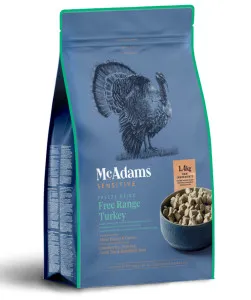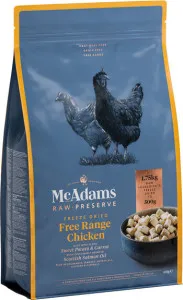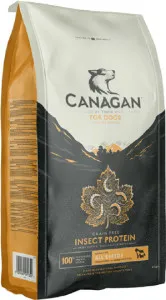What Should You Look for in Dog Food?
Choosing the right dog food is one of the most important decisions you can make for your furry friend. With so many options available, it can be overwhelming to determine which product is best for your dog’s health and well-being. Whether you’re a first-time dog owner or a seasoned pet parent, understanding what to look for in dog food is essential. In this guide, we’ll break down the key factors to consider when selecting the perfect food for your pup.
1. High-Quality Protein Sources
Dogs are naturally carnivorous, and protein is a critical component of their diet. When evaluating dog food, always check the ingredient list to ensure that a high-quality protein source is listed as the first ingredient. Look for options like:
- Chicken
- Beef
- Lamb
- Fish
- Turkey
- Brown rice
- Sweet potatoes
- Carrots
- Blueberries
- Spinach
- Omega-3 and Omega-6 fatty acids for healthy skin and coat
- Calcium and phosphorus for strong bones and teeth
- Antioxidants to support the immune system
- Fiber for digestive health
- BHA (Butylated Hydroxyanisole)
- BHT (Butylated Hydroxytoluene)
- Ethoxyquin
- Artificial food dyes
- Puppies: High in protein and fat to support growth and development
- Adult dogs: Balanced nutrition to maintain energy and health
- Senior dogs: Lower in calories but rich in joint-supporting nutrients like glucosamine
- Small breeds: Smaller kibble size and higher calorie density
- Large breeds: Formulas to support joint health and prevent obesity
- Excessive scratching or licking
- Red or inflamed skin
- Chronic ear infections
- Vomiting or diarrhea
- Dry food: Longer shelf life, promotes dental health, and is easy to measure
- Wet food: Higher moisture content, ideal for dogs with urinary issues, and often more flavorful
- Where are the ingredients sourced?
- Is the food made in the USA or abroad?
- Does the brand conduct regular quality testing?
- Are there any recalls associated with the brand?
- Days 1-2: 25% new food, 75% old food
- Days 3-4: 50% new food, 50% old food
- Days 5-6: 75% new food, 25% old food
Avoid dog foods that list vague terms like “meat by-products” or “animal meal” as these can be lower in quality and harder for your dog to digest. High-quality protein supports muscle development, energy levels, and overall health.
2. Whole Ingredients and Minimal Fillers
Just like humans, dogs benefit from whole, natural ingredients. Look for dog foods that include whole grains, vegetables, and fruits. These ingredients provide essential vitamins, minerals, and fiber that support digestion and overall health. Avoid foods with excessive fillers like corn, soy, and wheat, as these offer little nutritional value and can lead to allergies or digestive issues in some dogs.
Here are some whole ingredients to look for:
If your dog has specific dietary needs, consider grain-free options or specialized formulas available through a Pet Food Analyzer to find the best match.
3. Balanced Nutrition
A well-balanced dog food should provide the right mix of protein, fats, carbohydrates, vitamins, and minerals. The Association of American Feed Control Officials (AAFCO) sets guidelines for pet food nutrition, so look for a statement on the packaging indicating that the food meets AAFCO standards. This ensures that the food is complete and balanced for your dog’s life stage (puppy, adult, or senior).
Key nutrients to look for include:
4. Avoid Artificial Additives
Artificial colors, flavors, and preservatives have no place in your dog’s diet. These additives can cause allergic reactions, hyperactivity, and long-term health issues. Instead, opt for dog foods that use natural preservatives like mixed tocopherols (a form of vitamin E) or rosemary extract.
Common artificial additives to avoid:
Choosing a dog food with natural ingredients ensures your pup is getting the best nutrition without unnecessary chemicals.
5. Consider Your Dog’s Age, Size, and Activity Level
Not all dogs have the same nutritional needs. Puppies, adult dogs, and seniors require different levels of nutrients to thrive. Similarly, small breeds and large breeds have unique dietary requirements. Active dogs may need more calories and protein, while less active dogs may benefit from a lower-calorie diet to maintain a healthy weight.
Here’s a quick breakdown:
If you’re unsure about your dog’s specific needs, consult your veterinarian or use a Pet Food Analyzer to find the best option.
Recommended Products

McAdams Freeze Dried Free Range Turkey is an excellent choice for what should you look for in dog food. This dog food contains Boneless Free Range Turkey 86.5% and other high-quality ingredients that promote overall health.

McAdams Freeze Dried Free Range Chicken is an excellent choice for what should you look for in dog food. This dog food contains Boneless Free Range Chicken 86% and other high-quality ingredients that promote overall health.

Canagan Insect is an excellent choice for what should you look for in dog food. This dog food contains Freshly Prepared Insects (27%)* and other high-quality ingredients that promote overall health.
6. Check for Allergens
Food allergies are common in dogs and can cause symptoms like itching, ear infections, and digestive issues. Common allergens include beef, dairy, wheat, and chicken. If your dog shows signs of an allergy, consider switching to a limited-ingredient diet or a novel protein source like duck or venison.
Signs of food allergies in dogs:
Always introduce new foods gradually and monitor your dog for any adverse reactions.
7. Wet vs. Dry Food
Both wet and dry dog food have their pros and cons. Dry food is convenient, cost-effective, and helps keep your dog’s teeth clean. Wet food, on the other hand, is more palatable for picky eaters and provides additional hydration. Some pet owners choose to mix both for variety and balanced nutrition.
Consider the following when deciding:
Ultimately, the choice depends on your dog’s preferences and specific health needs.
8. Read Reviews and Research Brands
Not all dog food brands are created equal. Take the time to research brands and read reviews from other pet owners. Look for companies with a strong reputation for quality and transparency. Some brands even offer detailed information about their sourcing and manufacturing processes, which can give you peace of mind.
Questions to ask when researching brands:
Using a Pet Food Analyzer can also help you compare brands and find the best option for your dog.
9. Consult Your Veterinarian
Your veterinarian is an invaluable resource when it comes to choosing the right dog food. They can provide personalized recommendations based on your dog’s breed, age, weight, and health conditions. If your dog has specific medical needs, such as kidney disease or diabetes, your vet may recommend a prescription diet.
Regular check-ups and open communication with your vet ensure your dog’s nutritional needs are being met throughout their life.
10. Transition Gradually
When switching your dog to a new food, it’s important to do so gradually to avoid digestive upset. Start by mixing a small amount of the new food with their current food, gradually increasing the proportion over 7-10 days. This allows your dog’s digestive system to adjust to the new diet.
Steps for a smooth transition:
